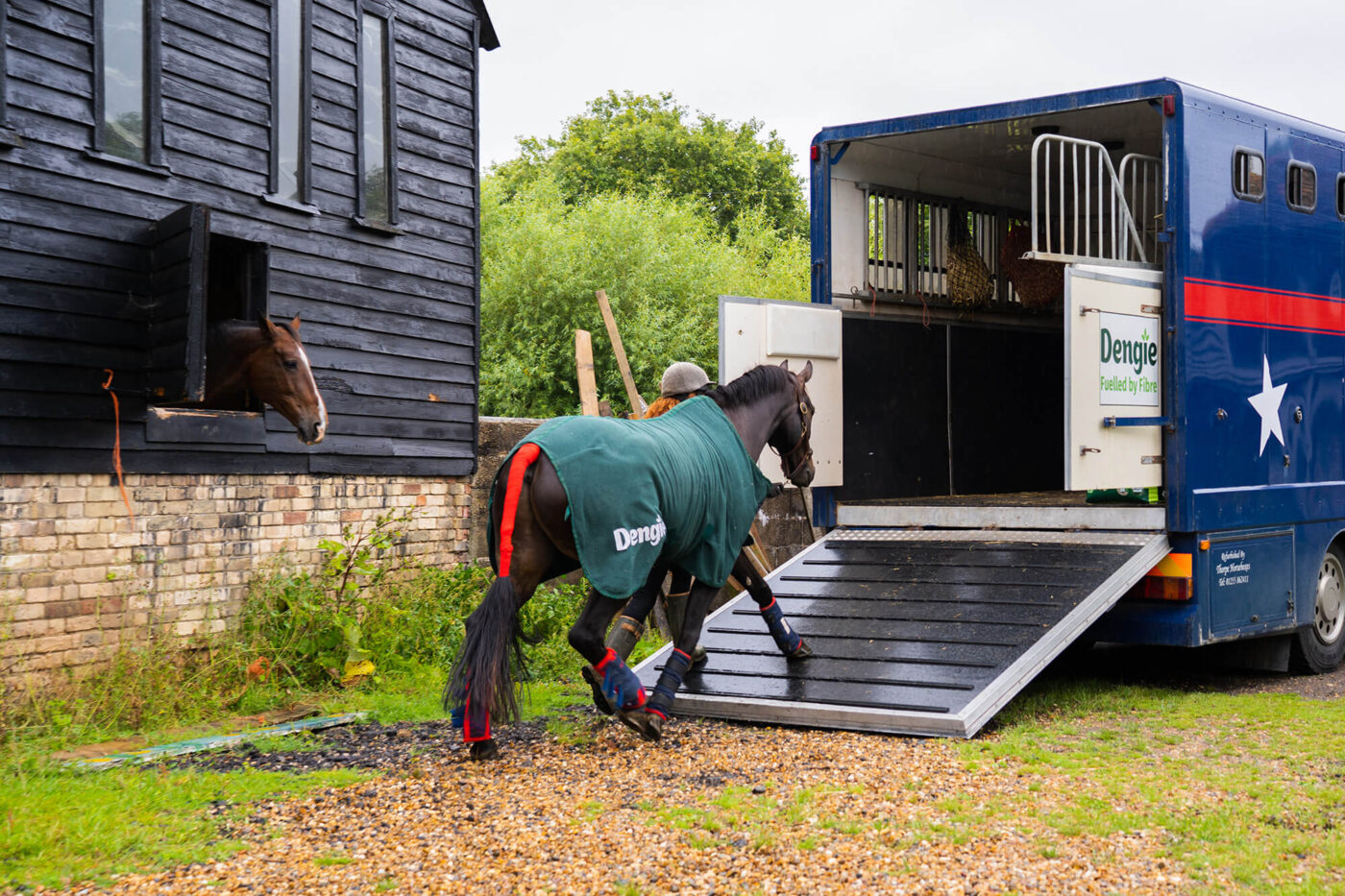Competing your horse on a Fibre Diet
As the start of the competition season approaches, it is a good time to reflect on the role fibre plays in the diet of the performance horse. Whatever level you compete at, and no matter how hard you are working your horse, fibre should be the foundation of the ration.
Fibre for Energy
Often undervalued as an energy source, fibre can provide a significant amount of energy for the working horse. The amount of energy supplied depends on the digestibility of the fibre, which is influenced by plant type, environmental conditions and most significantly maturity at harvest. The more mature a plant, the less digestible it will be and therefore the less energy it will provide. Straw is a particularly low energy fibre for this reason making it fantastic for good do-ers, but not as useful for the performance horse that has a higher energy requirement.
Combining high quality fibre such as alfalfa with energy dense oil such as in Dengie Alfa-A Oil, provides as much energy as a competition mix/cube at around 12.5 MJ/Kg DE, but with much lower levels of starch. Fibre and oil are both slow-release energy sources and so are particularly useful for stamina and condition without the fizz.

Fibre for Digestive Health
It is well documented that fibre is vital for the digestive health of the horse. Low fibre diets, combined with higher starch rations are linked to loose droppings, an increased risk of colic and gastric ulcers. When it comes to ulcers not all fibre is the same and research has shown that alfalfa is a superior buffer to acidity in the digestive tract compared to grass based forages. This is because alfalfa is naturally abundant in calcium. Feeding a double handful of a chopped alfalfa-based fibre feed in the 20-25 minutes before you ride is recommended to help prevent ‘acid splash’ in the non-glandular region of your horse’s stomach. The fibre makes sure the stomach isn’t empty and suppresses the movement of the acidic contents when the horse moves.
Competing away from home can often mean a change of diet either because there is little or no opportunity to graze or because it is necessary to change to the forage provided at the showground. Getting your horse established on a partial hay replacer ration before you go is one way of avoiding a total diet change. Grass used in chopped fibre feeds is harvested when the grass plants are young and therefore more digestible. This means they have a higher nutritional value than grass hay and so are great for supporting the increased demands of travelling and competing.

Fibre to Supply Protein
Protein is vital for growth, renewal and repair and when it comes to the competition horse this translates to strength and top line muscle condition. It is important to understand that nutrition isn’t the only piece of the puzzle and you will also need to focus on fitness and training to build your horse’s muscle tone too. Having sufficient protein in the diet is important for building muscle and it’s not just the amount of protein, but the quality as well, that matters. Protein is made up of building blocks called amino acids. Some of these must come from the diet and these are called essential amino acids and described as “quality” protein. Of these, lysine is particularly important as it is a limiting amino acid – if the horse has insufficient lysine then protein synthesis and therefore muscle development would be limited.
Your horse will obtain protein from a variety of sources in the diet including grass, forage and the bucket feed. Some ingredients such as alfalfa are particularly abundant sources of protein. Alfalfa typically supplies 1.8x more lysine than average hay, making it a valuable addition to the ration to help promote muscle development.
Fibre to Aid Hydration
Hydration is key for health and performance. Both water and electrolytes are required to keep your horse hydrated and an electrolyte supplement should be a daily addition to the ration throughout training, travel and competition. Using a fibre mash such as Dengie Alfa-Beet, which combines alfalfa and unmolassed sugar beet, can be helpful for two reasons. Firstly, as a soaked feed, Alfa-Beet carries water into the digestive tract and, as it is so highly digestible, releases it readily to aid hydration. Secondly, as Alfa-Beet is a very palatable fibre mash it is useful for masking the taste of electrolytes or water when travelling and competing away from home. Dengie Pure Grass Pellets can also be used as a tasty mash to add electrolytes to as well.

Fibre and Respiratory Health
Stabling and travelling horses in confined spaces potentially increases their exposure to respirable particles which can be detrimental to respiratory health. Respirable particles include mould, amongst other things, and even hay and straw that look and smell ok to us can still contain a significant mould count and have the potential to do harm.
Dengie Performance Fibre combines precision dried grasses and alfalfa with a light molasses and oil coating with added spearmint oil. As both the grasses and alfalfa are precision dried, Performance Fibre provides an exceptionally clean fibre source for the performance horse and can also be used as a partial forage replacer. Performance Fibre is a highly palatable fibre feed which is useful for helping to tempt the fussy feeder which can be a particular problem in the fit horse, regularly travelling away from home.


